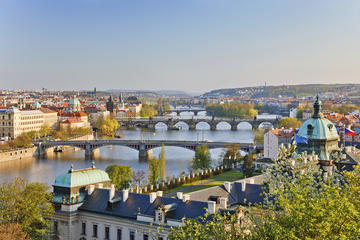Vltava River
TIME : 2016/2/22 10:36:19

Vltava River
The Vltava is the Czech Republic’s longest river, starting its life in southern Bohemia before meandering 270 miles (430 km) northwards through UNESCO-listed Český Krumlov on the way to Prague before it joins the River Elbe in Mělník. The very location and formation of Prague has been decreed by the Vltava over millennia; the river provided water for irrigation and drinking as the city grew up on its two banks, splitting the Baroque Malá Strana (Lower Town) in the west from the Gothic Staré Město (Old Town) and the modern city to the east.
Although it is dammed upstream, the Vltava is now largely a river dedicated to pleasure craft and watersports. Its most famous sight as it runs through Prague is the Charles Bridge, built in the 14th century and awash with statues, buskers and souvenir sellers. Most river cruises start from underneath Charles Bridge, which is the perfect vantage point for views of Prague Castle high on Hradcany Hill, the church spires in Malá Strana and the towers of the Staré Město. Turning north through the heart of the city, cruisers pass the Rudolfinum and National Theatre, the Strahovské Monastery and the giant metronome in Letná Park. Small open-topped wooden barges also venture into the Čertovka Canal (Devil’s Stream), once a millrace around Kampa Island and now a sleepy backwater lined with Baroque townhouses.
Venturing south along the Vltava from Charles Bridge, cruise boats chug underneath the Jirásek and Palacký bridges to see the cheeky, curvy architecture of Frank Gehry’s Dancing House, built in 1996 to fill a hole blasted by one of the few bombs that fell on Prague during World War II. Just beyond the Smíchov Canal Lock – the biggest on the river – the mighty Gothic fortress of Vyšehrad Citadel looms in to view on the west bank.
Practical Info
There are nine dams over the length of the river and 107 bridges spanning it; 17 of these are on its 30-km (19-mile) course through Prague.
